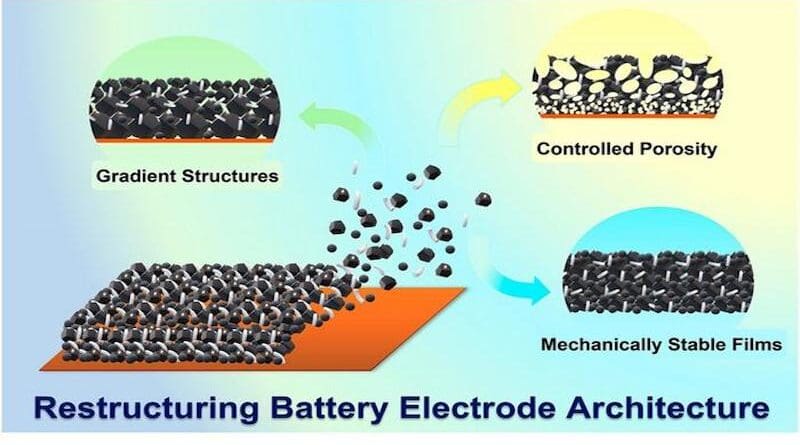New Strategies Restructuring Lithium-Ion Batteries
A perspective on lithium-ion battery (LIB) innovation explores the potential of novel electrode design strategies to significantly enhance battery performance. This research delves into templating, gradient, and freestanding electrode design approaches, emphasizing their impact on energy density, charging speed, and commercial viability. This perspective critically examines process tunability, scalability, and material compatibility, offering a roadmap for future advancements in LIB technology.
Lithium-ion batteries have been pivotal in powering modern technology, from mobile devices to electric vehicles. As demand for higher performance batteries grows, the focus has shifted from merely optimizing battery materials to rethinking the entire cell design and architecture.
In a paper (doi:10.1007/s11783-024-1801-x) published in the journal eScience, a research team from The University of Texas at Austin outlines innovative strategies for restructuring LIB electrodes, moving beyond traditional manufacturing methods. These strategies include the development of templating techniques to create precise pore structures for improved ionic transport, the use of gradient designs that vary composition and microstructure across the electrode to optimize energy storage and transfer, and the introduction of freestanding electrodes that eliminate the need for metal foil current collectors, thereby offering enhanced mechanical stability and energy density.
Integrating these architectural innovations with advanced materials is crucial to unlocking superior battery capabilities. The study also emphasizes the necessity of scalable, economically feasible production methods to transition these advancements from the lab to the market.
Professor. C. Buddie Mullins, the co-author of the study, emphasized the significance of this research in advancing energy storage solutions. He noted, “This research marks a significant milestone in our quest for more efficient, reliable, and sustainable energy storage solutions. By reimagining electrode design, we can overcome existing limitations and pave the way for batteries that are not only more powerful but also more adaptable to a range of applications.”
The perspective concludes that the restructured electrode architectures offer a promising path forward for enhancing LIB performance. Such innovations could lead to batteries with higher energy densities, faster charging times, and greater longevity, significantly impacting electric vehicles, renewable energy storage, and portable electronics sectors. Moreover, the research underscores the importance of continued exploration in electrode design to meet evolving technological and societal needs.
In addition to electrode restructuring, a recently published paper (doi: 10.1016/j.esci.2023.100170) in the same journal discuss from another viewpoint on the formulation of electrolyte and solid-electrolyte interphase (SEI) properties for better LIB. Advancement in novel solutions like liquefied gas, weakly solvating, and localized high-concentration electrolytes, together with electrode structure innovation, promise to overcome traditional limitations, ensuring reliable battery function even at sub-zero temperatures.

